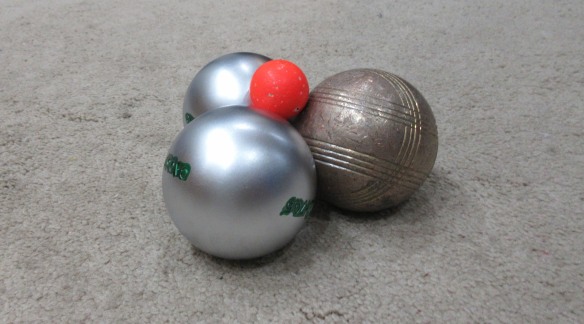At any time during a mène (end, round) the game must be in one of two states.
- One of the teams has the point.
- Neither of the teams has the point.
In French, when one of the teams has the point, we say— “team X has the point” (l’équipe X a le point).
If neither team has the point, we say— “there is a null point” (il y a un point nul) or “the point is null” (le point est nul).
It is as simple as that. When neither team has the point, the point is null.
There are two situations in which the point is null.
- The best boules of each team are equidistant from the jack, so that neither boule is closer than the other.
- There are no boules on the terrain.
There are special rules for how to continue when the point is null— see our post on Which team throws next.
So, you ask— Why have I never heard the expression “null point”?
The answer is— Because the English version of the FIPJP rules mistranslates the expression “null point”. The last sentence of Article 16 of the French rules is this:
Si aucune boule ne se trouve plus en terrain autorisé à la suite d’un tir ou d’un appoint, il est fait application des dispositions de l’article 29 relatives au point nul.
The 2020 English version of of the FIPJP rules (incorrectly) translates point nul as a dead end.
If after shooting or pointing no boules are left on the designated playing area, the arrangements concerning a dead end as defined in article 29 apply.
Since this is the only place where the expression point nul occurs in the FIPJP rules, mistranslating it in this one place almost guarantees that English-speaking players will never read or hear the expression.

An equidistant-boules situation. Neither team has the closest boule— the point is null. Note that the jack is not dead.

I remember this from playing in LA.
LikeLike